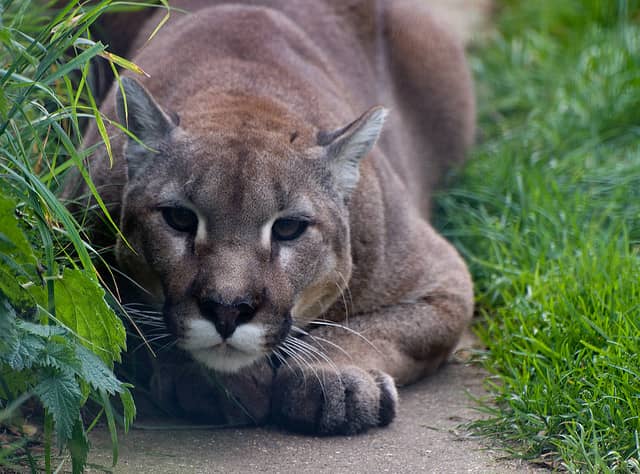Michigan DNR Confirms Presence of Cougar in Ontonagon County
OutdoorHub 09.13.11

The Michigan Department of Natural Resources today confirmed the presence of a cougar in Ontonagon County. The animal was captured on a trail camera on private property on Sept. 8, walking directly toward the front of the camera and clearly showing it has an ear tag and a radio collar.
DNR Wildlife Division staff visited the property Sept. 12 where the trail cam is mounted and verified the location of the camera.
“We are pleased that the individuals that caught this animal on video reported it promptly to the DNR and allowed us to verify the location of the camera,” said Adam Bump, a wildlife biologist with the DNR’s Cougar Team. “It is a very interesting sighting given the fact that the cougar has been radio-collared and ear-tagged.”
The DNR is in the process of tracking down possibly where the cougar is from, and is contacting other states with known cougar populations. Only western states currently have cougars collared for research projects, so it is possible that the animal traveled a great distance to reach the Upper Peninsula.
The Department will inform the public as soon as more details are known about this cougar.
Cougars, also known as mountain lions, originally were native to Michigan but were thought to have been extirpated around the turn of the last century. The last known wild cougar taken in Michigan was killed near Newberry in 1906. However, sightings are regularly reported and although verification is often difficult, the DNR has verified two sets of cougar tracks and confirmed the location of a cougar photo in the eastern Upper Peninsula in 2009 and several sets of cougar tracks in Marquette and Delta counties in 2008.
Established cougar populations are found as close to Michigan as North and South Dakota, and transient cougars dispersing from these areas have been known to travel hundreds of miles in search of new territory. Characteristic evidence of cougars include tracks, which are about three inches long by three and a half inches wide and typically show no claw marks, or suspicious kill sites, such as deer carcasses that are largely intact and have been buried with sticks and debris.
Reports of cougar tracks and other evidence should be made to a local DNR office or by calling the department’s 24-hour Report All Poaching line at 800-292-7800. If a citizen comes into contact with a cougar, the following behavior is recommended:
- Stop, stand tall, pick up small children and do not run. A cougar’s instinct is to chase.
- Do not approach the animal.
- Try to appear larger than the cougar. Never take your eyes off the animal or turn your back. Do not crouch down or try to hide.
- If the animal displays aggressive behavior, shout, wave your arms and throw rocks. The idea is to convince the cougar that you are not prey, but a potential danger.
- If a cougar attacks, fight back aggressively and try to stay on your feet. Do not play dead. Cougars have been driven away by people who have fought back.
Cougars are classified as an endangered species in Michigan. It is unlawful to kill, harass or otherwise harm a cougar except in the immediate defense of human life. To learn more about cougars and how to identify their tracks, go www.michigan.gov/cougars.
The Michigan Department of Natural Resources is committed to the conservation, protection, management, use and enjoyment of the state’s natural and cultural resources for current and future generations. For more information, go to www.michigan.gov/dnr.

